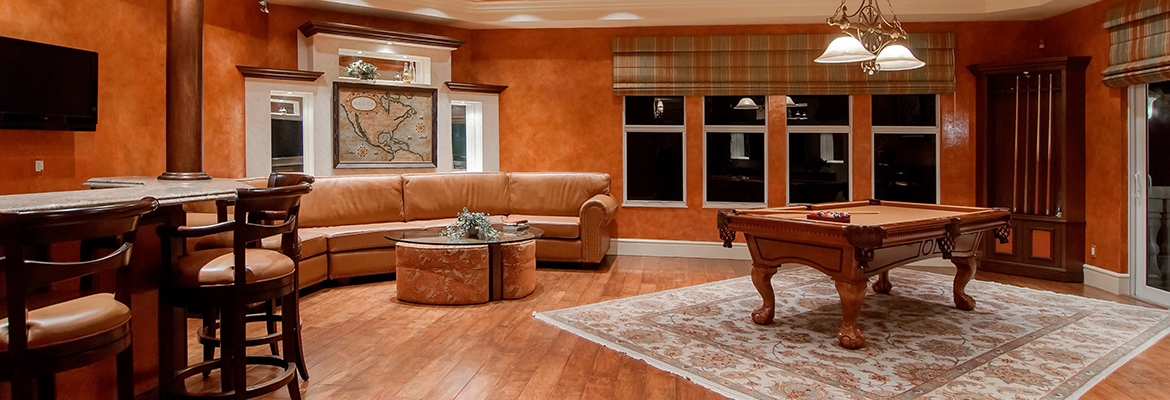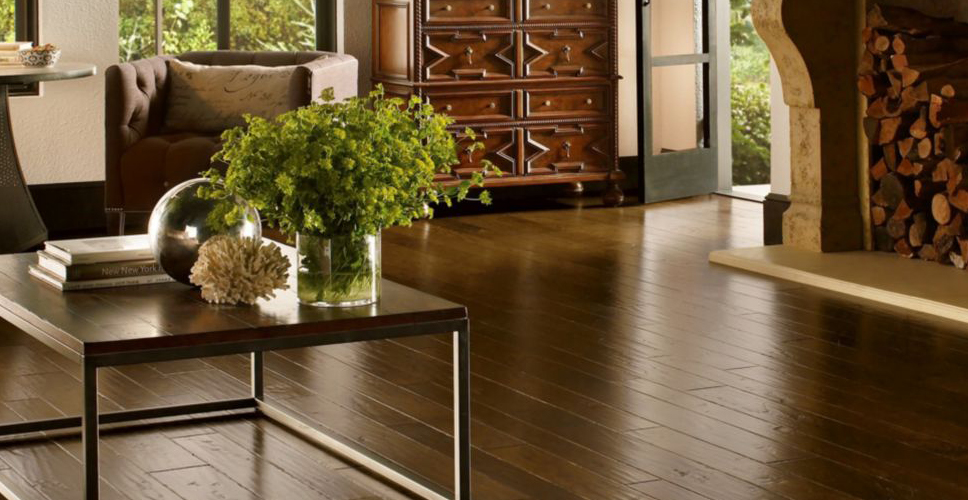

There are many different kinds of flooring options to choose from, from vinyl and laminate planks to solid hardwood floors. Engineered hardwood flooring is another popular floor material used for home improvement around the world, but what is engineered hardwood, and what makes it such a popular and versatile choice? Read on for all you need to know.
So what exactly do we mean by the term “engineered hardwood”? Well, as the name implies, engineered hardwood flooring is made of real wood that has undergone some engineering processes to both save money and add strength and solidity.
The main distinguishing characteristic of this kind of wood flooring is that it is made up of multiple layers, also known as plys, which are stuck or bonded together. There can be as few as three and as many as ten of these layers in a single square foot of engineered wood floor.
The top layer is the part that you see across your floors, offering aesthetic appeal and elegance. Meanwhile, the lower core and base layers are made of other types of wood to add stability and resistance to the overall structure.
In other words, engineered hardwood is a type of flooring that is made by stacking different layers of wood veneer together. There are many reasons why this is done, which leads us to the next stage of the guide.
So why do people make and install engineered hardwood flooring? Why not just use solid hardwood floor materials instead? Well, one of the main reasons why engineered hardwoods are made is for extra strength and durability.
The combination of different thin layers of wood adds a lot of strength and solidity to a floor, giving it great levels of resistance against dents, water damage, humidity, pests, and more. In fact, high-quality hardwood floors are some of the strongest around, and they don’t expand and contract in different temperatures like solid wood flooring tends to.

There are many benefits associated with engineered hardwood, and many reasons to choose this type of flooring over other types of flooring like laminate flooring or vinyl planks. Here are some of the biggest advantages:
One of the best things about engineered hardwood flooring is that it’s very easy to install and offers a huge range of installation methods. You can install these floors over existing surfaces like concrete, for example, and you can choose to fit them in different ways, like gluing, stapling, or as a floating click-together floor.
Another advantage of opting for engineered hardwood over solid hardwood is the cost. Since engineered flooring only has a thin layer of hardwood on the top and cheaper woods making up the core, it usually works out at less per square foot than something like oak or cherry. So you can fill a bigger room with it for less money than a solid wood floor.
Engineered wood is designed to last a very long time. In fact, the best woods can last for up to 30 years before they need to be replaced. During that time, it’s possible for these woods to be refinished several times. They’re suitable to be sanded down and refinished as you like to suit your changing tastes over time or to buff away surface scratches and marks.
Another reason why so many people love engineered hardwood is that it provides the look and feel of real hardwood, without the same price tag. Unlike wood-look laminate, engineered hardwood is not an imitation. It’s made of real wood and gives you the same texture and aesthetic, adding elegance and beauty all over the home.
No, it’s very important to note that engineered hardwood and laminate floors are not the same product. They may look similar, and there are some great quality wood-imitation laminate planks and tiles out there.
However, engineered hardwood is very different, as it contains a top layer of real wood. Laminate floors only have a printed photographic top layer which is designed to look like wood, but isn’t actually made of it. These two products also differ in terms of price and durability, too.
These days, there are many different varieties of hardwood floors, with dozens of different wood species to choose from as the top layer, including hickory, maple, oak, and others.
Buyers can also choose from glossy, matte, or semi-gloss finishes, depending on the level of shine they want in their wood floors, and there are even different surface effects to make the wood look rustic, worn, or distressed.